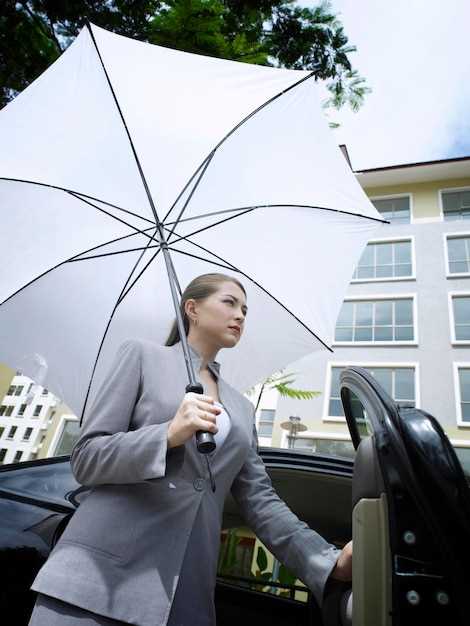
The car you drive is not just a mode of transportation; it is a significant investment that deserves proper protection from the elements. Exposure to the harsh sun and unpredictable weather can lead to various forms of damage, diminishing both the aesthetic appeal and resale value of your car. Understanding how to shield your vehicle from these detrimental factors is essential for any car owner.
Effective protection from the sun involves more than simply parking in the shade. Ultraviolet (UV) rays can cause the car’s paint to fade and deteriorate over time. Implementing a combination of preventive measures, such as using protective covers and applying wax, can significantly extend the lifespan of your car’s exterior. Additionally, taking steps to safeguard the interior from the heat and sunlight is equally important, as it affects the overall comfort and longevity of the vehicle’s materials.
Weather conditions also play a crucial role in your car’s health. Rain, snow, and ice can lead to rust and other forms of corrosion if not adequately addressed. Incorporating strategies to prevent water damage and keeping your car clean and well-maintained are vital components of safeguarding your vehicle. By following these tips, you can effectively protect your car from the adverse effects of the sun and the elements, ensuring it remains in excellent condition for years to come.
Choosing the Right Car Cover for Maximum Protection

When selecting a car cover, it is essential to consider the materials and features that provide optimal protection against sun and weather damage. Look for covers made from UV-resistant fabrics that can shield your vehicle from the harmful rays of the sun, preventing fading and deterioration of the paint and interior surfaces.
The fit of the car cover is equally important. A well-fitted cover reduces the risk of wind getting underneath it, which can cause abrasions to the vehicle’s surface. Ensure that the cover you select has elastic hems or adjustable straps to secure it snugly around your car.
Water resistance is another critical factor. Opt for a cover that offers waterproof or water-resistant properties to protect your vehicle from rain, snow, and moisture build-up, which can lead to rust and other forms of damage. Additionally, look for breathability features to allow trapped moisture to escape, preventing mold and mildew from forming underneath the cover.
Lastly, consider the environment in which your vehicle is parked. For outdoor use, choose a heavy-duty cover designed for extreme weather conditions, while lighter covers may suffice for indoor storage. By investing in a quality car cover tailored to your needs, you can ensure maximum protection against the elements and prolong the life of your vehicle.
Best Practices for Parking to Minimize Environmental Risks

To ensure the long-term protection of your car from environmental damage, following best practices for parking is essential. Here are some effective strategies to consider:
-
Seek Covered Parking:
Utilize garages or carports when available. This protection shields your vehicle from direct sunlight, reducing the risk of paint fading and interior damage.
-
Choose Shaded Areas:
If covered parking isn’t an option, opt for shaded locations. Positioning your car under trees or large structures can provide a natural barrier against UV rays and precipitation.
-
Avoid Overhanging Trees:
While trees offer shade, they can also pose risks such as sap, bird droppings, and falling branches. Search for a balance between shade and potential damage.
-
Park Away from Busy Areas:
Parking further from heavy traffic can reduce the risk of scratches and dents caused by other vehicles or pedestrians.
-
Keep Windows Closed:
Ensure that all windows are securely closed when parking to prevent water leaks and interior damage during rain or storms.
-
Watch for Puddles:
Puddles can indicate poor drainage and flooding risks. Avoid parking in areas prone to standing water to prevent corrosion and electrical issues.
-
Rotate Parking Spots:
Regularly change your parking location to reduce the exposure of your car to the same environmental conditions, which can minimize potential damage over time.
By implementing these best practices, you can significantly enhance the protection of your car against environmental risks, ensuring its longevity and maintaining its value.
Maintenance Routines to Preserve Your Car’s Appearance
Regular maintenance is crucial for protecting your car from damage caused by the sun and weather conditions. One of the most effective routines is washing your car frequently. Dirt, grime, and bird droppings can severely affect the paint, leading to corrosion and fading. Aim to wash your vehicle at least every two weeks, using a gentle pH-balanced soap to ensure that you do not strip any protective wax or sealants.
Applying wax or sealant is another essential step in your maintenance routine. This provides a barrier against ultraviolet rays and harsh weather elements. It is recommended to wax your car every three months, as this not only enhances the shine but also aids in water beading, reducing the risk of water damage and rust formation.
Regularly inspecting tires, windows, and weather stripping is equally important. Check for signs of wear and tear, as compromised components can lead to leaks and further damage. Replacing worn-out weather stripping can prevent water from entering the vehicle and protect the interior upholstery from fading and deterioration due to sun exposure.
Consider investing in sunshades or car covers, especially in regions with intense sun exposure. These protective accessories help shield the dashboard and seats from fading while keeping the interior cool. Parking in shaded areas whenever possible also helps in minimizing sun damage over time.
Finally, routine interior cleaning using appropriate cleaners for various surfaces can prevent fading and cracking. Vacuuming the carpets and upholstery while using a protectant on leather can keep your vehicle looking fresh. Following these maintenance routines will go a long way in preserving your car’s appearance, providing lasting protection against sun and weather-related damage.





